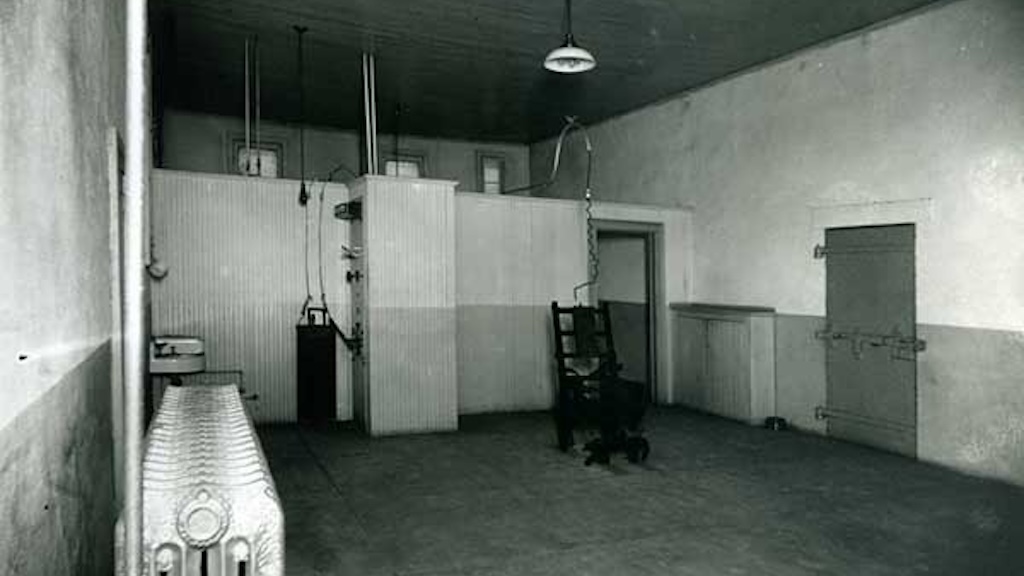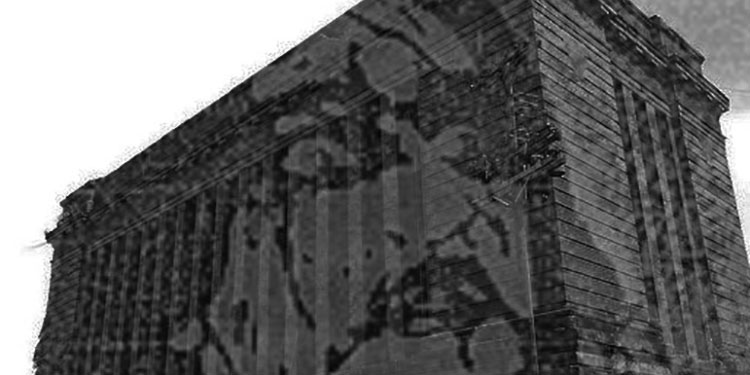The story of the Ruth Snyder Execution photograph and how “ruthless Ruth” became the subject of the most famous tabloid picture ever taken and the crime that shocked the nation.
The room was cold, and the air was palpable as Ruth Snyder walked into the execution chamber. Staring her down was the chair that she would spend her last moments in. Though she knew the chair was an inanimate object, she could feel the deathtrap looking deep into her soul, judging her for every sinful moment she had ever committed in her life, especially the act which landed her in the position she was in. As she turned her gaze away from the chair, she met eyes with a young reporter. Though she never would know his name, where he was from, or anything else about him, the two would become intertwined for eternity. The hood was placed over Ruth’s face. Darkness surrounded her as the contraption was connected to her body. A stern voice calls out to her from the void and asks “Ruth Snyder, you are sentenced to death by electrocution. Do you have any last words?” and in a loud, but shaky voice, she spoke the words made famous by another sentenced to death ages ago: “Father, forgive them, for they know not what they do.” As the words left her lips, Ruth heard the loud click of a switch being flipped.
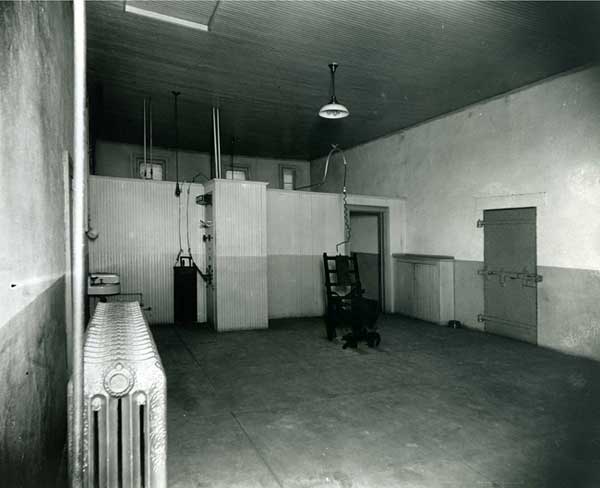
Ruth Brown was born in Manhattan, New York in 1895 and spent much of her life there. She met and married a man named Albert Snyder. Unfortunately for Ruth, however, Albert’s heart forever yearned for another whose heart had stopped beating long ago. Albert was still in love with his long-dead fiancé Jessie Guishard. Despite her being dead for over a decade, Albert would die, in this case quite literally, before he let her memory fade. He constantly talked about how beautiful Guishard was, attempted to name the family boat after her, and even went as far as to hang her picture in the Snyder household. Ruth ripped down the photo and demanded Albert not go through with the boat name. Albert apologized but clumsily told Ruth that Guishard was “the finest woman he ever met.” He then changed the name of the boat to “Ruth.” Even before this incident, Ruth knew that this marriage was something she didn’t want. “I don’t know what possessed me to marry him. His interests were not mine” Ruth was quoted as saying. The two, however, stayed married and eventually had a daughter named Lorianne.

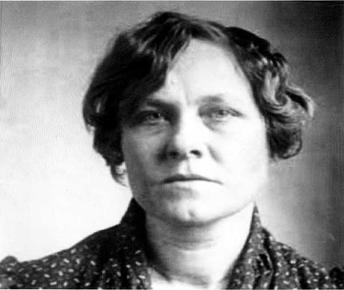
Feeling rejected by the man she pledged her life to, Ruth began to seek love and pleasure outside of the marriage. This led her to a traveling corset salesman in Queens, New York by the name of Henry Judd Gray. Snyder and Gray were lovers and spent every available moment together. Gray, like Snyder, had a family and child back home. This was neither of the two’s first venture into infidelity. Not long into their relationship, they began to plot a way out of Snyder’s marriage. The two devised a plan to commit insurance fraud on Albert and collect the money: they would do this by killing Albert, staging the scene as a robbery gone bad, and collect the insurance payout for $48,000 – a little over $500,000 in today’s money – through the details of what came next were never shared by either Snyder or Gray.
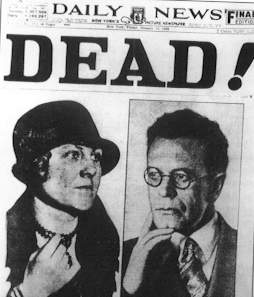
Their plot failed seven different times, but on the eighth time, the plot succeeded. March 20th, 1927 Gray and Snyder successfully killed Albert in his own home. Albert died by suffocation, as both Snyder and Gray garroted Albert and then shoved rags filled with Chloroform into Albert’s nostrils. Frantically, they began to arrange the scene to fit the mold of a robbery. Police arrived on the scene, and the couple both claimed the house had been burgled, and that Mr. Snyder was murdered by those who robbed the house.
The police, however, quickly saw through the lies of Snyder and Gray and arrested them both for the murder of Albert Snyder. Though Ruth Snyder stuck to the burglary story, her lover folded quickly and confessed to crime. Ruth, feeling betrayed once again by a lover, turned on Gray and told authorities the scheme was all his idea. Both were convicted of murder and sentenced to death.
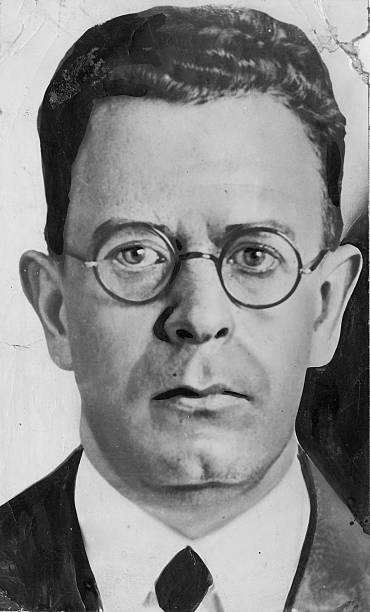
Tom Howard, a young reporter from Chicago, was tasked with reporting on the Ruth Snyder execution, which had become a media sensation at this point. Howard was tasked by the Chicago Tribune to go to New York state’s Sing Sing prison and cover the execution. The guards at Sing Sing prison, however, were very strict with their rules regarding reporters: No cameras of any sort. Howard began crafting an idea of how he could get a photo of the execution. He then created and rigged a homemade camera to his leg that, when a wire was pulled, snapped a photo. The camera fit comfortably around his ankle. Howard walked into the execution chamber at Sing Sing prison in New York with butterflies surgically circling the knots within his stomach. As soon as he made eye contact with Ruth Snyder, the gaze was broken by the black hood draped over her head. After she was hooked up to the machine, and she echoed the words of Jesus Christ, the switch was flipped. Howard positioned his foot directly in front of the gruesome scene and pulled the wire, hoping the camera worked and he got the picture. The execution took only minutes, and as soon as the ordeal was over, he quickly rushed to have the photos developed.
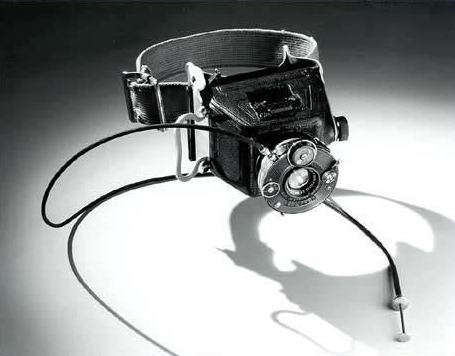
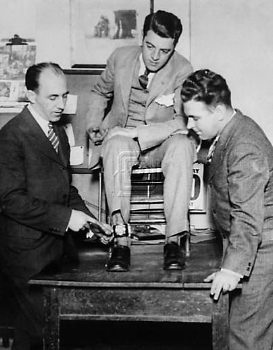
The photo was made famous overnight. It was the front page in every newspaper around the nation, from the Chicago Tribune where Howard worked, to the New York Daily News. It was, and arguably will remain, the most famous tabloid picture of all time, as it shows Ruth Snyder, a murderer and dejected lover, in the odd space between life and death.
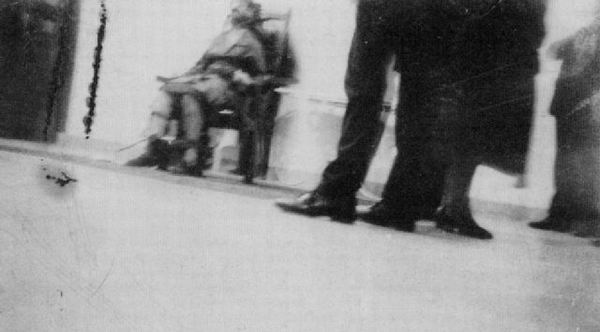
After the execution, Ruth Snyder was buried in Woodlawn Cemetery in the Bronx in New York City. She shares her final resting place with figures such as Duke Ellington, Miles Davis, Joseph Pulitzer, Bat Masterson, Herman Melville, and Nellie Bly. Her gravesite can be visited to this day, though there is little to it. Her stone simply reads “May R.” along with her death date.
Ruth Snyder’s story begs the question: does the justice system, fragile and human, as any other institution, really have the right to take a life? Does an eye for an eye really make the whole world blind, or does it make individuals think twice before they commit a heinous act? Should cold-blooded killers, such as Ruth, be subjected to the same torment they inflicted on another, or does that make the justice system, the entity that is supposed to be a shining beacon of fairness and justice, the same as the monsters committing these horrendous acts?

